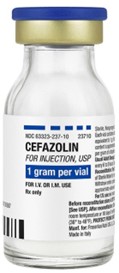A nurse is reviewing the medical record of a client who has sustained a full-thickness burn and is in the emergent phase of the burn. Which of the following findings should the nurse expect?
Hypernatremia
Hypercalcemia
Hypermagnesemia
Hyperkalemia
The Correct Answer is D
The nurse should expect to find hyperkalemia in the medical record of a client who has sustained a full- thickness burn and is in the emergent phase of the burn. This is due to the release of potassium from damaged cells into the bloodstream.
a) Hypernatremia is not a common finding in the emergent phase of a burn.
b) Hypercalcemia is not a common finding in the emergent phase of a burn.
c) Hypermagnesemia is not a common finding in the emergent phase of a burn.
Nursing Test Bank
Naxlex Comprehensive Predictor Exams
Related Questions
Correct Answer is B
Explanation
b. Migraines with aura.
Explanation:
Migraines with aura are considered a contraindication to the use of oral contraceptives. Auras are neurological symptoms that occur before or during migraines and can include visual disturbances, sensory changes, or speech difficulties. Women who experience migraines with aura have an increased risk of ischemic stroke when taking oral contraceptives. Therefore, it is important to identify this condition as a contraindication and explore alternative contraceptive options for the client.
The other options (a. History of renal calculus, c. BMI of 25, d. History of cholecystectomy) are not contraindications to the use of oral contraceptives.

Correct Answer is C
Explanation
The nurse should clarify the prescription for cefazolin with the provider. Cefazolin is a cephalosporin antibiotic, and there is a risk of cross-reactivity in individuals who have an allergy to penicillin.
a) Doxycycline and b) Vibramycin (which is another name for doxycycline) are tetracycline antibiotics and are not related to penicillin.
d) Gentamicin is an aminoglycoside antibiotic and is also not related to penicillin.

Whether you are a student looking to ace your exams or a practicing nurse seeking to enhance your expertise , our nursing education contents will empower you with the confidence and competence to make a difference in the lives of patients and become a respected leader in the healthcare field.
Visit Naxlex, invest in your future and unlock endless possibilities with our unparalleled nursing education contents today
Report Wrong Answer on the Current Question
Do you disagree with the answer? If yes, what is your expected answer? Explain.
Kindly be descriptive with the issue you are facing.
